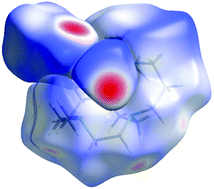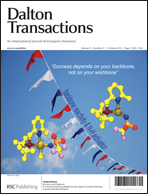CXCR4 chemokine receptor antagonists: nickel(ii) complexes of configurationally restricted macrocycles†
Abstract
Tetraazamacrocyclic complexes of transition metals provide useful units for incorporating multiple coordination interactions into a single protein binding molecule. They can be designed with available sites for protein interactions via donor atom-containing amino acid side chains or labile ligands, such as H2O, allowing facile exchange. Three configurationally restricted nickel(II) cyclam complexes with either one or two macrocyclic rings were synthesised and their ability to abrogate the CXCR4 chemokine receptor signalling process was assessed (IC50 = 8320, 194 and 14 nM). Analogues were characterised crystallographically to determine the geometric parameters of the acetate binding as a model for aspartate. The most active nickel(II) compound was tested in several anti-HIV assays against representative viral strains showing highly potent EC50 values down to 13 nM against CXCR4 using viruses, with no observed cytotoxicity (CC50 > 125 μM).


 Please wait while we load your content...
Please wait while we load your content...